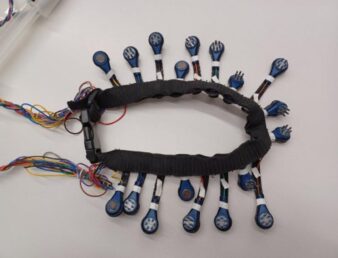Students design a more inclusive EEG system

Doctors order EEG tests for a range of reasons, from diagnosing epilepsy to sleep disorders. The EEG measures electrical activity in the brain using electrodes attached to the scalp, most often through a device that resembles a swim cap.
But that cap doesn’t always work well on people with thick or curly hair, which means many Black people aren’t able to get good EEG readings or participate in research studies that use EEGs.
“Individuals with braids, locs, Afros, twists, wigs or any other natural or culturally Black hairstyles are often overlooked because of the incompatibility of EEG devices with their hair,” said Giorgia Asamoah, a senior in the Richard and Loan Hill Department of Biomedical Engineering at UIC, in an article on the department website.
So Asamoah and fellow seniors Aussten Hayes, Madeline Simmons, Abdul Syed and Elizabeth Wynn worked with Beatriz Peñalver Bernabé, assistant professor of biomedical engineering, to design a more inclusive EEG device. Their system resembles a headband that can be adjusted in length depending on the user’s hairstyle and head size.
The students completed the project as part of the senior design course required of all College of Engineering students. They showcased their work at the annual Engineering Expo April 19.
You can read more about their project on the biomedical engineering department website.

